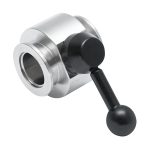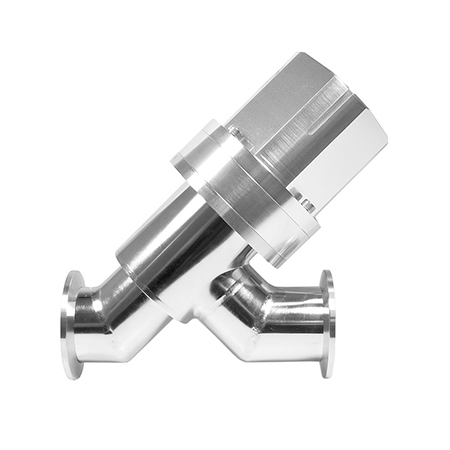
Valve Classification
There are many types of valve products, and the statements are not unified. Some are classified by purpose (such as chemical valves, petroleum valves, oilfield valves, power station valves, etc.), some are classified by medium (such as water vapor, air valves, etc.), and some Materials are divided (such as cast steel valves, forged steel valves, cast iron valve stations, etc.), some are divided according to the connection form (such as flange, wafer, butt welding, internal thread connection, etc.), and some are divided by temperature ( Such as low temperature valve, high temperature valve station, etc.). It is used in industrial sectors such as petroleum, chemicals, fertilizers, pesticides, synthetic plastics, synthetic fibers, synthetic rubber, food, medicine, water and electricity, as well as national defense, scientific research, transportation, agriculture and even living facilities.
Valves can be divided into:
Butterfly valve-used to open or close the medium in the pipeline. It can also be used as a regulating valve.
Ball valves, gate valves, plug valves, stop valves-used to open or close the flow of the pipeline.
Check valve (including bottom valve)-used to automatically prevent the medium in the pipeline from flowing back.
Throttle valve-used to adjust the flow of pipeline media.
Safety valve-used in boilers, container equipment and pipelines, when the medium pressure exceeds the specified value, it can automatically remove the excess medium pressure to ensure the safety of production and operation.
Pressure reducing valve—used to automatically reduce the pressure of the medium in the pipeline and equipment. When the medium passes through the gap of the valve disc, resistance is generated and pressure loss is caused to achieve the purpose of reducing pressure.
Trap—used to automatically drain the condensate on the steam pipeline to prevent steam loss or leakage.
Classified by structural characteristics:
1) The gate-shaped closing piece moves along the center line of the valve seat.
2) The gate-shaped closing piece moves along the center line perpendicular to the valve seat.
3) The swing-shaped closing member rotates around an axis outside the valve seat.
4) The spherical or cock-shaped closing element is a plunger or a ball, which rotates around its centerline.
5) The butterfly-shaped closing piece is a disc, which rotates around the axis in the valve seat.
6) Slide valve shape
7) Roof shape
8) Pipe clamp shape
Valves classified by purpose and function are:
Shut-off valves-mainly used to cut off or connect the medium flow. Including gate valves, globe valves, diaphragm valves, ball valves, plug valves, butterfly valves, plunger valves, ball plug valves, needle instrument valves, etc.
Regulating valves-mainly used to adjust the pressure or flow of the medium. Including regulating valve, throttle valve, pressure reducing valve, etc.
Check valves-used to prevent the medium from flowing back. Includes check valves of various structures.
Diverter valves-used to separate, distribute or mix media. Including various structures of distribution valves and traps.
Safety valves-used for safety protection when the medium is overpressured. Including various types of safety valves.
Distribution valve-used to change the flow direction of the medium to play a role in distribution. Such as three-way cock, three-way stop valve, etc.
Valve for gas choke drainage-retain gas and remove condensate. Such as traps.
High temperature valve—valve greater than 450’C.
Medium temperature valve—valve with 120’C≤t≤450’C.
Normal temperature valve—valve with -40’C≤t≤120’C.
Cryogenic valves—valves with -100’C≤t≤-40’C.
Ultra-low temperature valve-less than -100’C valve.
Classified by valve body material
Metal material valves-such as carbon steel valves, cast steel valves, stainless steel valves, alloy steel valves, cast iron valves, titanium alloy valves, Monel alloy valves, copper alloy valves, aluminum alloy valves, lead alloy valves.
Metal valve body lined valves-such as fluorine lined valves, rubber lined valves, lined valves, lead lined valves, enamel lined valves.
Non-metallic materials valves-such as ceramic valves, glass steel valves, plastic valves.
General valve classification
General valve classification methods are divided into ball valves, butterfly valves, gate valves, check valves, globe valves, throttle valves, instrument valves, plunger valves, diaphragm valves, plug valves, and pressure reducing valves according to principles, functions and structures. , Safety valves, traps, regulating valves, bottom valves, filters, drain valves, etc.
Valves are classified by pressure
Vacuum valve—a valve whose working pressure is lower than the standard atmospheric pressure.
Low pressure valve—valve with nominal pressure PN less than 1.6MPa.
Medium pressure valve—valve with a nominal pressure of PN 2.5~6.4MPa.
High pressure valve—valve with nominal pressure PN10.0~80.0MPa.
Ultra-high pressure valve—valve whose nominal pressure PN is greater than 100MPa.
Classified by power
1) Automatic valve A valve that operates on the strength of the medium itself. Such as check valves, pressure reducing valves, traps, safety valves, etc.
2) Drive the valve. The valve is operated by external forces such as manpower, electricity, hydraulic power, and pneumatic power. Such as manual, electric, hydraulic, pneumatic, electro-hydraulic linkage, gas-liquid linkage, etc.
Classified by manipulation method
1) Manual valve A valve operated by manpower with the help of handwheels, handles, levers, sprockets, gears, worm gears, etc.
2) Electric valve A valve operated by electric power.
3) Pneumatic valve A valve operated by compressed air.
4) Hydraulic valve A valve operated by external force by means of water, oil and other liquids.
Classified by power
1) Automatic valve A valve that operates on the strength of the medium itself. Such as check valves, pressure reducing valves, traps, safety valves, etc.
2) Drive the valve. The valve is operated by external forces such as manpower, electricity, hydraulic power, and pneumatic power. Such as manual, electric, hydraulic, pneumatic, electro-hydraulic linkage, gas-liquid linkage, etc.
Classified by connection method
1) Threaded connection valve: The valve body has an internal thread or an external thread and is connected with the pipe thread.
2) Flange connection valve: The valve body has a flange and is connected with the pipeline flange.
3) Welding connection valve: The valve body has a welding groove and is welded to the pipeline.
4) Clamp connection valve: The valve body has a clamp, which is connected with the pipe clamp.
5) Ferrule connection valve: Use ferrule connection with the pipeline.
6) Wafer connection valve: a connection form where the valve and the two pipes are directly clamped together with bolts.







